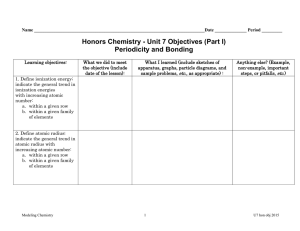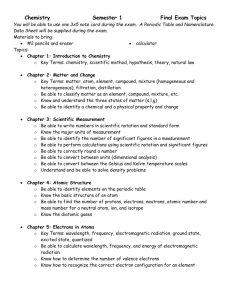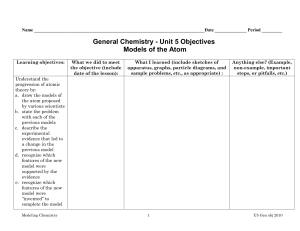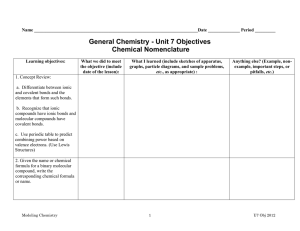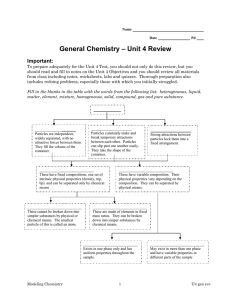Document 15557752
advertisement
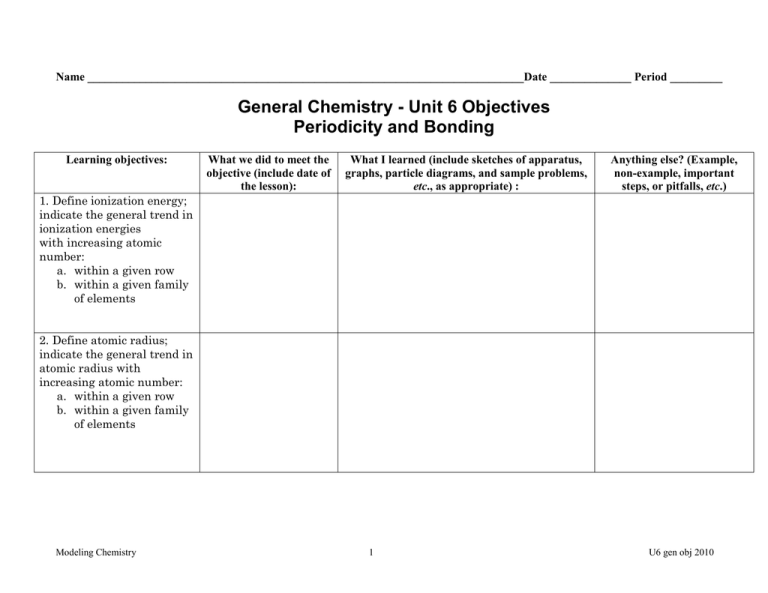
Name ___________________________________________________________________________Date ______________ Period _________ General Chemistry - Unit 6 Objectives Periodicity and Bonding Learning objectives: What we did to meet the objective (include date of the lesson): What I learned (include sketches of apparatus, graphs, particle diagrams, and sample problems, etc., as appropriate) : Anything else? (Example, non-example, important steps, or pitfalls, etc.) 1. Define ionization energy; indicate the general trend in ionization energies with increasing atomic number: a. within a given row b. within a given family of elements 2. Define atomic radius; indicate the general trend in atomic radius with increasing atomic number: a. within a given row b. within a given family of elements Modeling Chemistry 1 U6 gen obj 2010 3. Demonstrate your understanding of the concept of grouping of elements in terms of similar chemical properties; state the general characteristics of four major families: the alkali metals, the alkaline earth metals, the halogens and the noble gases 4. Explain the behavior of elements in a given family in terms of their tendency to achieve a noble gas electron arrangement by gaining or losing electrons. 5. Draw Lewis Dot Structures of valence electrons for the Representative Elements. Modeling Chemistry 2 U6 gen obj 2010 6. Using the Periodic Table, predict the formula of the compound formed by a given pair of elements. 7. Describe the conditions that make a chemical bond primarily covalent or ionic. 8. Draw electron-dot diagrams (Lewis Dot Structures) of for ionic and molecular compounds. 9. Recognize that ionic compounds have ionic bonds and molecular compounds have covalent bonds. Distinguish between what an ionic bond and covalent bond mean in terms of electrons. Modeling Chemistry 3 U6 gen obj 2010
